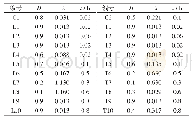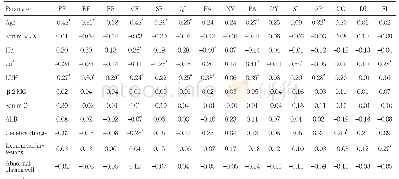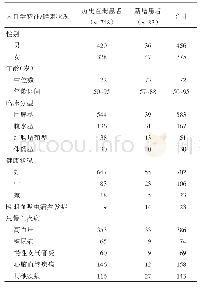《Table 2.Rating reef health status (1, 2 and 3 relevant to less, medium and good reef health, respec
 提示:宽带有限、当前游客访问压缩模式
提示:宽带有限、当前游客访问压缩模式
本系列图表出处文件名:随高清版一同展现
《"A study of coral reef resilience and implications of adaptive management and rehabilitation in Khanh Hoa Province,Vietnam"》
Most reefs in the study sites were located in shallow waters with a maximum depth of less than 7 m,and some reefs were even in waters of only 2–3 m in depth.In addition,the morphology of many reefs(nearly 50%)was flat and even.The rated scores(Table 2)show that many sites have unfavorable depth and heterogeneity for reduction-of-temperature stress and decrease-in-light penetrability.Therefore,water exchange played an important role in mixing waters and reducing temperature.In the review on the physical conditions in central Vietnam(Bui,2011),differences in water temperature were found along Khanh Hoa′s coastal waters.With a low amount of water exchange,the northern section of the Van Phong Bay had high temperatures in the summer(perhaps 32°C at most),but the southern section experienced lower temperatures,with a maximum of 30°C.Meanwhile,the Nha Trang Bay was characterized by cooler temperatures,with maximum summer temperatures of 29.5°C in the northern part and 28.5°C in the southern part.Field measurements in the summer of 2015(Table 3)reflected a trend of temperature reduction in the waters from the north(>30°C for most sites)to the south(generally around 28–29°C).The multi-year data show the fluctuation of average temperatures in the Nha Trang Bay as ranging between 24.0 and 29.5°C,with two minimums in January and June.The second one was due to the influence of upwelling,which occurs annually in the summer in the coastal waters southward of the Nha Trang Bay(Bui,2011).
| 图表编号 | XD0040193800 严禁用于非法目的 |
|---|---|
| 绘制时间 | 2019.01.01 |
| 作者 | Si Tuan Vo、Thai Tuyen Hua、Kim Hoang Phan |
| 绘制单位 | Institute of Oceanography, Vietnam Academy of Science and Technology、Institute of Oceanography, Vietnam Academy of Science and Technology、Institute of Oceanography, Vietnam Academy of Science and Technology |
| 更多格式 | 高清、无水印(增值服务) |
查看“Table 2.Rating reef health status (1, 2 and 3 relevant to less, medium and good reef health, respectively) and favorabil”的人还看了
-

- Tab.5 Health status and cocoon quality results of silkworms reared with mulberry leaves under different planting pattern





